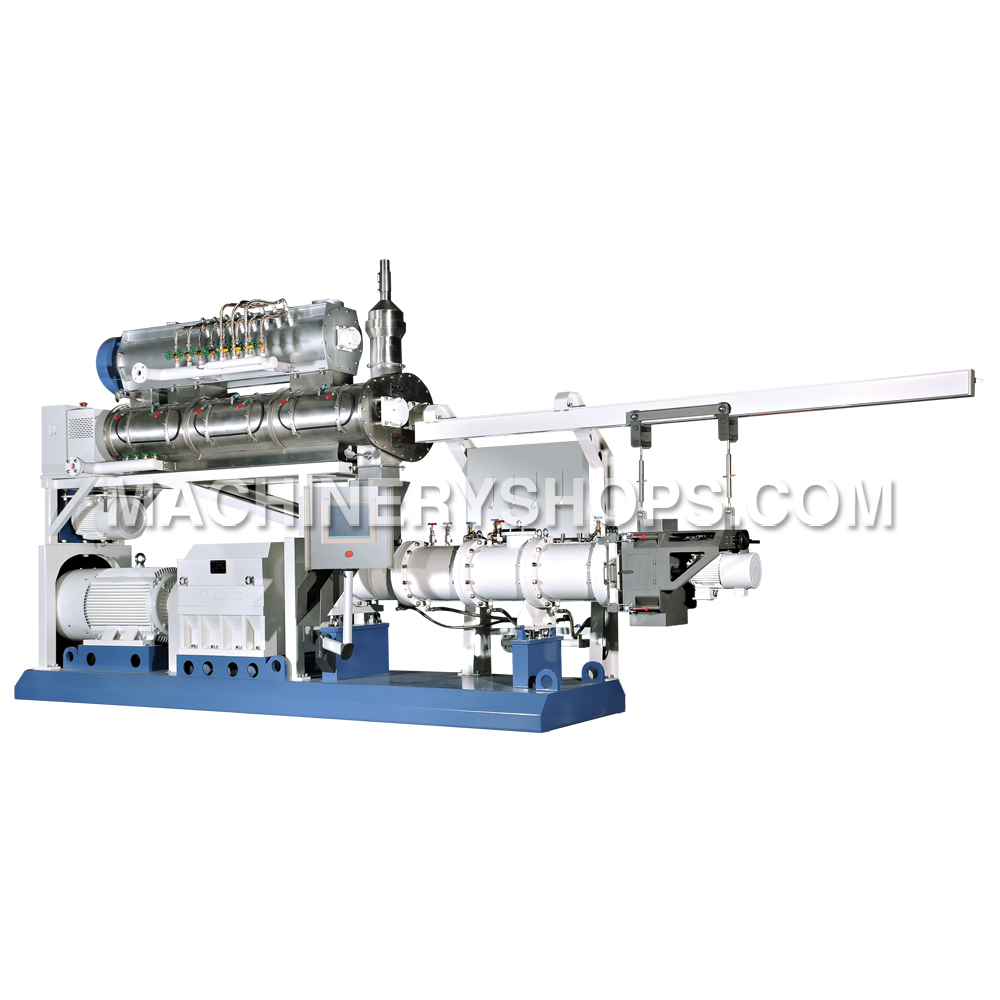Home>>News
Machineryshops.com
Extruder Performance in Aquafeed Production
To substantially improve extruder performance in aquafeed production, in recent years Muyang made extensive research efforts into five aspects of extrusion and gained some key achievements: to increase energy efficiency of the extruder, to enhance pellet uniformity, to lengthen the service life of wear parts, to increase production rate for sinking aquafeeds as well as that of micro-aquafeed, among which, the energy efficiency improving technology and its application as well as the development on pellet uniformity control will be introduced in this article.
***How did Muyang increase energy efficiency of the extruder system?
With the development of extrusion technology, one of the development trends in aquafeed milling is that the extruder is taking the place of pellet mill and becoming the most popular and most efficient milling machine because of its flexible production adaptability, high product quality and high sanitation assurance.However, the obstacle impeding extruder popularisation is energy input, which must be decreased.
As we all know, sufficient energy is required to put into the extrusion system to sustain the whole extrusion process, from material conditioning to kneading, shearing, cooking, extruding, forming and finally obtaining qualified aquafeed.
Essentially, the input energy is normally defined in two forms: the specific mechanical energy (SME) and the specific thermal energy (STE).
***How did Muyang control pellet uniformity in aquafeed extrusion?
Good pellet uniformity and pleasing appearance are the important and attractive characters for high quality aquafeed.
However, the relationship between good pellet uniformity and high production capacity is hard to balance, just like you can’t have your cake and eat it too, especially for the single-screw extruder. As the production capacity increases, the pellet uniformity declines.
Usually, good pellet uniformity can be gained when the extruder is running at 70~80 percent of its rated load.
Essentially, the non-uniform extruded pellets are generated by materials lacking homogeneity in the whole feed milling process. From grinding to mixing, conditioning, extruding and forming, material’s lack of proper homogeneity in any of these processes will finally cause non-uniform extruded pellets.
Fortunately, material homogeneity in the grinding, mixing and conditioning processes is easy to be controlled with available techniques. The most challenge is to control feed mash homogeneity during extruding.

1) Non-uniform shearing force: The more difference of shearing force brought by extruding screw stressing on feed mash, the more non-uniform gelatinisation and the more non-uniform pellet finally achieved.
2) Different flow rate: Flow rate of feed mash during extruding could be different in two zones - the screw zone and the non-screw zone (between the end of screw and the die plate). The different flow rate of feed mash in the extruder will cause different ripening time, and different gelatinisation as well as different pellets quality accordingly.
For a normal extruder, the difference of shearing force and that of flow rate are related to production capacity. The larger the actual capacity that is close to the rated value, the bigger the difference of shearing force and that of flow rate.
In view of above impacting factors, Muyang has developed the so called "turbulent flow extruding technology" to control pellet uniformity in aquafeed extrusion.
It is applied to well distribute the shearing force in the screw zone and to unify the flow rate in both the screw zone and the non-screw zone (between end of screw and die plate) in an extruder chamber. The turbulent flow extruding technology can help extruder (especially the single-screw extruder) perform outstandingly in aquafeed production.
Reviews
Write a review
If you would like to write a review, please login first.










